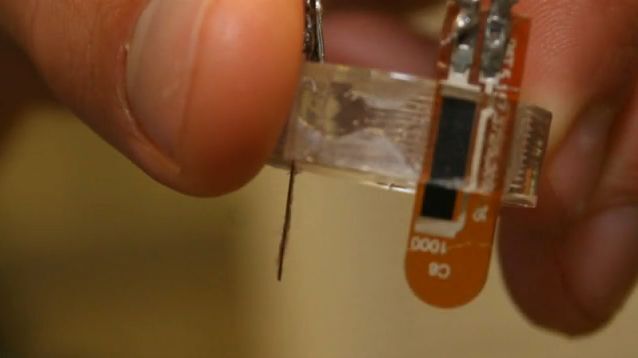Four mechanical engineering undergraduates from the University of California, San Diego (UCSD), have installed a computer and eight velocity sensors on a surfboard, in effort to create the ultimate surfing experience. While the students ride the board across the waves, the sensors register the speed at which the board skims along the water, then send that data to the computer, which proceeds to transmit it wirelessly to a laptop on the beach. The computer also saves the data on an internal memory card. The students built the board for their senior design project, but also as a part of Ph.D. student Benjamin Thompson’s science-of-surfboards project, in which he hopes to design the "perfect" board.
The sensors not only measure the water flow speed, but also the amount that the surfboard bends. By comparing the speed to the bend on various parts of the board, Thompson hopes to better understand how boards change shape when ridden, and how that flexibility affects their performance – a topic of much debate within the surfing community.


Thompson’s goal is to determine the optimum amount of bend, and build that into a state-of-the-art surfboard. He is also interested in discovering if that amount is a universal constant, or if it varies depending on factors such as surfer experience or wave conditions.
“This project is going to apply some science that most likely [board] shapers understand pretty well...it’s going to settle the debates,” said UCSD team member Dan Ferguson. “It’s going to be black and white hard data to let them know for sure which ideas work, which concepts work, and why they work.”







